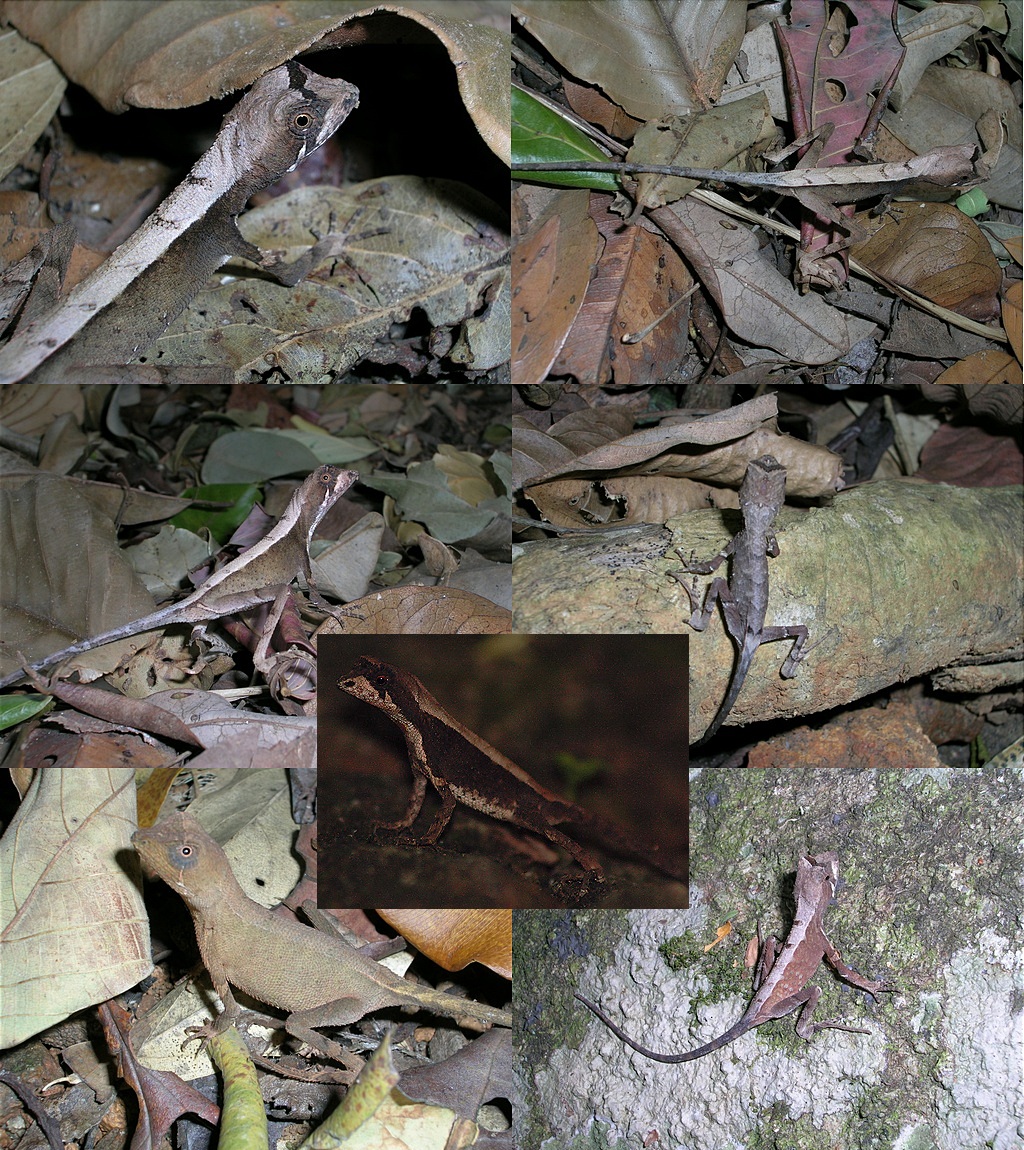The forest canopy between Rosemala and Dharbhakulam

The accommodation at Dharbhakulam is unmatched. A green tin-sheet shed stands in a 20x20 metre patch of land facing an emerald green lake surrounded by mountains on 3-1/2 sides. You could almost mistake it for a volcanic crater lake. The shed is surrounded by a 10-foot-deep moat. One crosses the moat using a makeshift timber-log bridge. The local guides who assisted us were from Rosemala and were excellent cooks. All meals were vegetarian, made in coconut oil with plenty of grated coconut added. Rice was brown and paraboiled.
Dharbhakulam shed

View from Dharbhakulam shed

This was the first time Dhrabhakulam was allotted a place in the census and it felt great to be pioneers, albeit not very big ones. Habitat was a mix of dense evergreen, mixed deciduous and degraded grassland/dry deciduous towards the Tamilnadu side, 3km north-west of the shed. Bird-wise there were no surprises. Of note were plenty of Vernal Hanging Parrots Loriculus vernalis flying about noisily and also plenty of Black-crested Bulbuls Pycnonotus melanicterus gularis (a.k.a. Ruby-throated Bulbul), Malabar Grey Hornbill, Orange-headed Ground Thrush, Malabar Trogon (we spotted a female at very close range), Blue-faced Malkoha Phaenicophaeus viridirostris, Black Eagle, Common Kestrel, Great-eared Nightjar Eurostropodus macrotis, Grey Nightjar Caprimulgus indicus, Blossom-headed Parakeet Psittacula roseata, Emerald Dove, Forest Wagtail Dendronanthus indicus, Tickell's Blue Flycatcher, an unidentified Brown Flycatcher, Shikra Accipiter badius, Black-Shouldered Kite Elanus caeruleus (we spotted a sub-adult flying over a gorge), Booted Warbler Hippolaias caligata, Blyth's Reed Warbler Acrocephalus dumetorum, Little Cormorant, Cattle Egret, White-breasted Waterhen, Greenish Warbler Phyloscopus trochiloides, Edible-nest Swiftlet Collocalia fuciphaga, plenty of Asian Fairy Bluebirds Irena puella (m and f), Golden-fronted Leafbird Chloropsis aurifons, Grey Junglefowl, Common Iora, Black Drongo, Rufous Babbler Turdoides subrufus, Hill Myna, Common Myna, Puff-throated Babbler Pellorneum ruficeps, Indian Scimitar Babbler Pomatorhinus horsfieldii, Jungle Babbler, White-bellied Blue Flycatcher, Brown Hawk Owl Ninox scutulata, Purple Sunbird, Purple-rumped Sunbird, Little Spiderhunter Arachnothera longirostra, Plain/Nilgiri Flowerpecker (?) and Black-rumped Flameback Dinopium benghalense.
Snakes spotted were the Malabar Pit Viper Trimeresurus malabaricus and the Nilgiri Keelback Amphiesma beddomei, which was a lifer for me. It's a beautiful snake with dark brown colouration that transluscends to golden brown when backlit. It's the forest equivalent of the Checkered Keelback and is found along forest streams and wet, rocky banks. Diet is mostly toads and is largely terrestrial.
The Beddome's Keelback or Nilgiri Keelback Amphiesma beddomei
A. beddomei in a defensive position
Backlit body
The Nilgiri Keelback moving in habitat
Malabar Pit Viper T. malabaricus on a twig
Malabar Pit Viper T. malabaricus on a twig
Other reptiles spotted were a few sightings of Roux's Forest Lizard Calotes rouxii, plenty of Otocryptis beddomii Kangaroo Lizards in various colourations (see montage below), a Hemidactylus frenatus (Asian House Gecko) in an abandoned house, and an unidentified gecko belonging to the Cnemaspis genus from a patch of forest with dense evergreen cover, ferns and a stream running close by. Plenty of Mabuya skinks too.
Roux's Forest Lizard, Calotes rouxii
Unidentified Cnemaspis gecko
A montage of different individuals of the Western Ghats Kangaroo Lizard Otocryptis beddomii, also known as the Indian Kangaroo Lizard.
Butterflies we got to see were plenty of Southern Birdwings including a mating pair; Tamil Lacewing; Malabar Rose; Red-spot Duke male basking; a few Clipper sightings; Bamboo Treebrown; Blackvein Sergeant; Suffused, Immaculate and Water Snow Flats; Fulvous Pied Flat; unidentified palm darts; Red Helen; Commander; Cruiser; Tamil Yeoman; Common Albatross; Gram Blue; Angled Pierrot; Common Cerulean; Tiny Grass Blue; Southern Rustic and Common Evening Brown. Common Rose, Blue Tiger, Glassy Tiger, Dark Blue Tiger, Double-branded Crow, Common Crow, et al were also commonly seen.
Gram Blue Euchrysops cnejus mudpuddling
Tiny Grass Blue Zizula gaika

Unidentified Flash

An unidentified species of crab was also seen in a shallow, fast stream. Also sighted was a Bottle-green Scorpion, about 15cm in length.

One unidentified frog near a marshy pond.

Baccaurea courtalensis (mooti pazham in Malayalam). The fruit is edible and is harvested by the Rosemala dwellers.


Unidentified flora:

Other critters spotted were Red Cotton Stainer bugs, shield bugs, and a species of harvestmen of brown colouration (Opilionidae).
Red Cotton Stainer bugs (nymph)

A Harvestman (class: Arachnida order: Opiliones)

No direct sightings of mammals. Elephant trumpets were heard twice, once from north-east of the shed on the 7th afternoon and from the north-west on the same evening. Dung was found in plenty, but was more than 3 weeks old in all cases. Also spotted scat of a leopard, again older than 4-5 weeks. One spot had been dug up, appearing to be the handiwork of a bear. No signs of wild boar, gaur, spotted deer. Sambar prints were found along a dry rivulet.
Misc images:










2 comments:
nice post great profiling of the residents dhaval, it is great to trek the kerela forests
ah.. I missed the census.. will be there in the next year..
Post a Comment